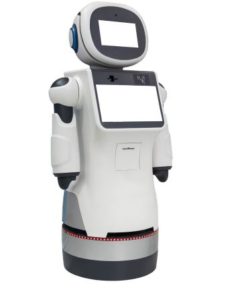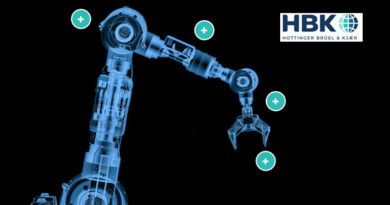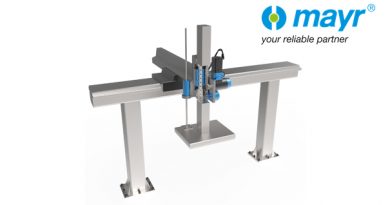Efficiency and Safety for AGVs and AMRs
ADVANCED SENSOR TECHNOLOGY FOR IMPROVED EFFICIENCY AND SAFETY
In the rapidly evolving world of intralogistics, autonomous mobile robots (AMR) and automated guided vehicles (AGV) are playing an increasingly prominent role. These technological innovations are transforming the way materials and goods are handled in warehouses worldwide. In addition to advanced propulsion and battery concepts, the rapid development of artificial intelligence, and the capabilities of wireless data transmission systems, innovative sensor technologies, such as load cells, are a crucial factor in this transformation. This article focuses on the significant role of specialised sensors, especially load cells, in AGV and AMR applications.
THE FUNDAMENTALS OF LOAD CELLS
A load cell is a device that enables precise and reliable weight measurements of objects. It consists of a spring body that undergoes microscopic elastic deformations under load, which are captured by built-in strain gauges and converted into electrical signals. A strain gauge is made up of a metallic conductor, which is applied as a measuring grid on a carrier film. The slight changes in resistance are detected using an electronic circuit, called the Wheatstone bridge circuit, which converts them into voltage signals. Thus, the combination of spring body, strain gauge, and electronics forms the central element of a load cell.
LOAD CELLS IN AGV AND AMR APPLICATIONS
Load cells are essential components in AGVs and AMRs, contributing significantly to the safety and efficiency of these systems.
Load distribution monitoring
By strategically placing load cells in AMRs and AGVs, the load distribution of transported goods can be monitored in real time. This enables control systems to intervene and prevent potential tipping hazards.
Weight measurement and picking
Load cells enable precise weight measurements and reliable picking directly by the robot or vehicle.
Overload protection
Integrated overload detection ensures that vehicles are safe by detecting overloads in a secure manner.
Drive control and optimised navigation
Integrating the measured weight values directly into the drive control loops of robots and vehicles enables efficient route and path planning.
CUSTOMISED SOLUTIONS FOR INDIVIDUAL REQUIREMENTS
Strain gauge based sensors provide numerous possibilities for individual customisation to meet the specific requirements of Original Equipment Manufacturer (OEM) applications.
Geometry and limited space
In AGVs and AMRs, space is often limited, which can make it challenging to integrate load cells. However, our engi- neers are capable of designing load cells that can function even in the tightest of spaces.
Output signals and interfaces
Customised sensors offer the necessary flexibility to meet the specific requirements of an application. We provide a wide range of output signals and interfaces, including both analog and digital interfaces, that can be seamlessly integrated into existing systems.
Protection concepts
Different applications require different protection con- cepts. That’s why we offer a wide range of protective solutions, including coatings, covers, and hermetic seals, to ensure that the sensors can operate reliably under various conditions. Our customised protection concepts are specifically tailored to the environment and require- ments of your application.

THE INNOVATION PROCESS FOR CUSTOM OEM SENSORS At HBK,
we work closely with our customers to develop custom sensors. Our engineers collaborate with OEMs to develop solutions for their measurement tasks.
Concept phase
The process of developing a custom sensor begins with identifying the need. Our experts work closely with you to define the specifications and develop possible designs that meet your unique requirements.
Design phase
Once the specifications have been clarified, our design engineers begin developing concepts. These concepts are then modelled and simulated, and the necessary materials and circuits for the integrated electronics are selected.
Prototype phase
In this phase, your sensor ideas take physical form for the first time. Our globally distributed competence and manufacturing centres produce prototypes of your custom sensors, which are then tested and sent to you. These prototypes serve as a starting point and are adapted in consultation with you to meet your specific requirements.
Mass production phase
Once the designs and prototypes have been successfully verified, we begin the series production of your custom sensors. With our global production network, we can flexibly respond to your needs and ensure that the quality of our sensors meets the highest standards.




